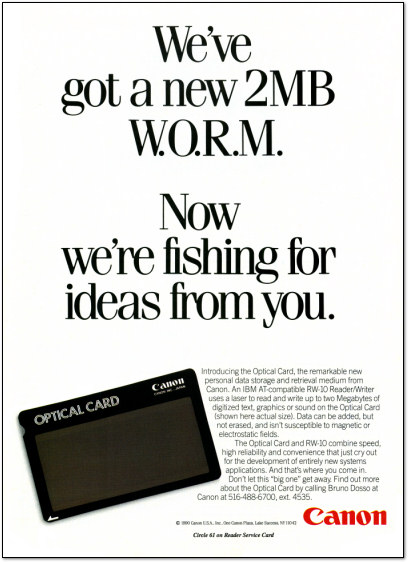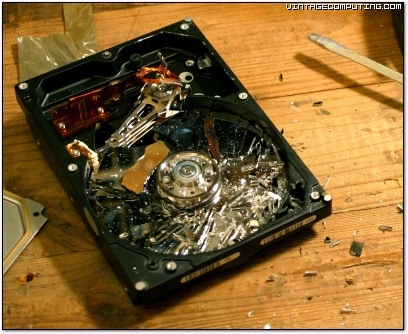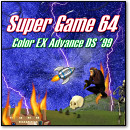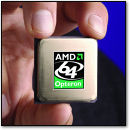Archive for the 'Technology Commentary' Category
How Times (and Cameras) Have Changed
Wednesday, February 4th, 2009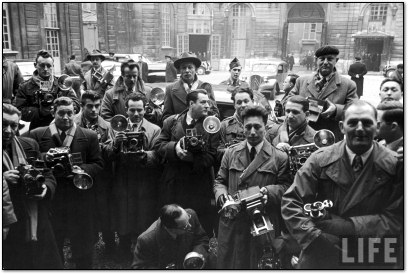 Press photographers wait for Dwight D. Eisenhower, 1951
Press photographers wait for Dwight D. Eisenhower, 1951
Photo: Gordon Parks / LIFE
 Crowd members photograph Barack Obama, 2009
Crowd members photograph Barack Obama, 2009
Photo: Pete Souza / White House
Digital technology has transmogrified today’s consumer cameras into tiny, futuristic-looking gadgets. Notice how nobody holds them to their face anymore — they just stare at LCD screens.
Not only have the cameras changed, but the photographers have changed as well: it seems that everyone has an imaging device in their pocket these days. With the help of a blog, flickr account, or YouTube, ordinary people on the street often beat professional photojournalists to the punch when it comes to breaking news.
Of course, press photographers still exist in 2009, and their cameras are much bigger and more professional-looking than those seen here. I was just struck by the contrast between the flashbulb-slingers of old and the average citizen photographer of today.
[ Retro Scan of the Week ] Not Quite Photoshop
Monday, January 5th, 2009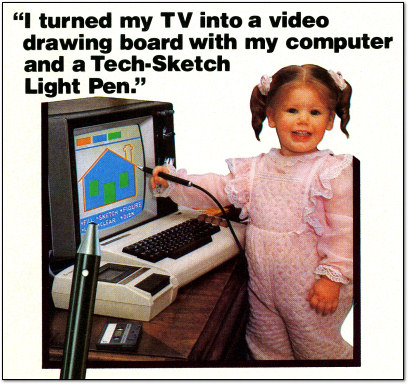 Click above to see the full advertisement
Click above to see the full advertisement
This ad for Tech-Sketch’s Paint-N-Sketch Level II brings back memories. My first encounter with computer art came courtesy of KoalaPaint and the KoalaPad tablet on the Atari 800. Later, I fell in love with MousePaint on my family’s Apple IIc. Using the mouse and creating shapes on the screen was a magical experience, and I regularly begged my father to boot it up for me so I could doodle around in four glorious colors. Because of the program’s title, I was convinced it had something to do with Mickey Mouse.
Not too long after, my dad sold the Apple IIc, and I lacked an outlet for computer art until he bought a Macintosh SE in 1987. But that’s another story all together. Now it’s your turn.
Discussion topic of the week: Tell us about your first computer art experience. What computer and software did you use?
If you use this image on your site, please support “Retro Scan of the Week” by giving us obvious credit for the original scan and entry. Thanks.
[ Retro Scan of the Week ] Forget the CD — Here’s the Optical Card
Monday, December 29th, 2008Around the turn of the 1990s, “WORM” (Write Once Read Many) became a common computer industry buzz-word for a new mass-storage concept. Numerous companies released their own WORM drives that used proprietary forms of optical media, most of which were incompatible with other WORM drives. Seen here is such an attempt: a curious “Optical Card” from Canon that obviously didn’t achieve widespread usage. According to the ad, it stored two megabytes of data on an optical layer that could be written once and never changed — much like a CD-R, but without the spinning disc.
Cursory Google searches reveal that the Canon Optical Card eventually saw limited trials as an identification card, either for travelers or medical information. Whether it’s still in use today is unknown to me.
Discussion topic of the week: Do you recall using any strange computer storage media that didn’t become a standard? (i.e. Bernoulli, magneto-optical, WORM, VHS, tape, cassette, Jaz, etc.) Tell us about the most exotic computer storage media you’ve used.
If you use this image on your site, please support “Retro Scan of the Week” by giving us obvious credit for the original scan and entry. Thanks.
Hurricane Flashback
Monday, September 1st, 2008
With hurricane Gustav bearing down upon the Gulf coast of America, our minds inevitably turn to the powerful storms and the havoc they rain down upon those living within their reach. Growing up in North Carolina, I’ve experienced a few hurricanes in my short lifespan, even though I don’t live on the coast. The worst for me personally, by far, was Fran, which flew far inland and leveled a hundred trees in my family’s back yard. Hurricanes are ominous and frightening reminders that despite all of mankind’s advances, we have yet to control weather’s powerful and chaotic flow.
But our hands aren’t fully tied: we can watch the weather and try to understand it. And the more we understand something, the less scary it seems. Imagine a hurricane hitting in a time before satellites or weather radar — with no more warning than the changing wind and a darkened sky.
[ Retro Scan of the Week ] TV is Now Here
Monday, September 1st, 2008 A few years ago, I brought home a large old cedar chest that had once belonged to my grandmother. It had languished, mostly forgotten, in my parents’ basement since my grandmother’s death in 1992. Upon cracking it open, I was instantly overwhelmed by the stale funk of old paper. My wife, sensitive to allergies, had to leave the room.
A few years ago, I brought home a large old cedar chest that had once belonged to my grandmother. It had languished, mostly forgotten, in my parents’ basement since my grandmother’s death in 1992. Upon cracking it open, I was instantly overwhelmed by the stale funk of old paper. My wife, sensitive to allergies, had to leave the room.
Among the greeting cards, family quilts, and my grandfather’s WWII uniform, I found the source of the smell: a large stack of vintage newspapers that my grandmother treasured. Some of the papers were fascinating windows to America’s past — chronicling John Glenn in space, the first landing on the moon, and the coronation of Queen Elizabeth II. Others dealt with less meaningful issues to me, such as unusually heavy winter weather or local events of eastern Tennessee.
Seeing an opportunity for Retro Scan of the Week, I combed through the newspapers looking for interesting material that I could share. The example you see below is the oldest VC&G-relevant ad I could find (I found others that I’ll post later). It’s a 1954 advertisement for a Westinghouse television set sold by “Don Cherry Tire Company.”
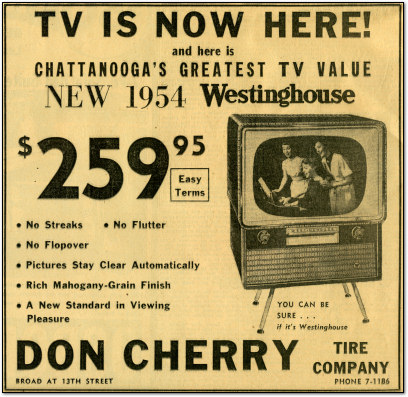 Chattanooga’s Greatest TV Value
Chattanooga’s Greatest TV Value
The headline, while amazing to us today, is somewhat self-explanatory: in 1954, television was coming into many American households for the first time. We’re witnessing, in print, the birth of an essential component of the personal computer and video game revolution — the affordable home TV set. Ironically, the small (likely 12-15″) black and white TV you see above sold for about $2,125.64 in 2008 dollars. Remember that the next time you plop down two grand for a new 42″ plasma.
Interestingly, I found a color ad for the same TV seen above on another site. And another here.
Discussion topic of the week: Tell us about your family TV set as a kid: when did your family get it, how big was it, and did you use it with home computers or video games?
If you use this image on your site, please support “Retro Scan of the Week” by giving us obvious credit for the original scan and entry. Thanks.
[ Retro Scan of the Week ] The Transistor
Monday, June 2nd, 2008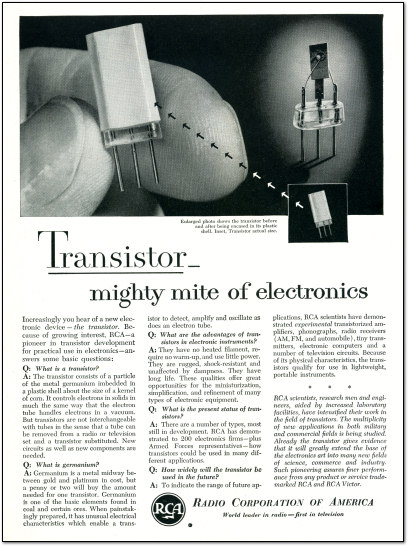 The transistor — need I say more?
The transistor — need I say more?
Let’s give a big round of applause to the electronic component that made our current computer revolution possible: the transistor. Here’s an advertisement from RCA touting the benefits of solid state transistor technology from a time when it was still novel. 55 years later, we’d be cramming 300 million of these onto a single piece of silicon smaller than a penny. And Microsoft Word still runs slowly.
Discussion topic of the week: What was your first computer’s CPU clock speed?
If you use this image on your site, please support “Retro Scan of the Week” by giving us obvious credit for the original scan and entry. Thanks.
Collectors Take Note: Microsoft HD-DVD Player Hits Clearance
Monday, March 3rd, 2008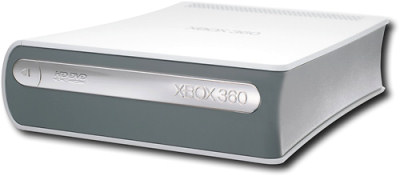
If you’re a regular reader of VC&G, you know the important role that clearance isles have played in my adventures as a video game collector. Silly as it may seem, collecting vintage computers and classic game systems starts now, in the present. Wise choices can be made as to what will become rare and collectible in the future, and collectors should seize the opportunity to purchase such items while they’re still available through regular retail channels.
Case in point: Thanks to Blu-Ray’s conquest over HD-DVD in the hi-def format wars, Microsoft’s HD-DVD drive for the Xbox 360 is now $50 (US) new at Best Buy and Circuit City. Best Buy even has a free HD-DVD movie rebate program that makes the deal much sweeter [expired] If you’re feeling lucky, wait a few months and they may dump them for even less. Otherwise, go for it now. If you’ve got the cash, buy a second and keep it mint in the box.
How Not to Dismantle a Hard Drive
Tuesday, November 6th, 2007Did you know the platters in most hard disk drives these days are made of glass? Neither did I, until last week…
What ever happened to good ‘ole fashioned aluminum discs? Thanks to a particularly rash and forceful extrication technique, I managed to spray bits of shattered, data-covered glass over half of my garage. Luckily, the pieces weren’t very sharp, as manufacturers apparently mix in some ceramic for good measure.
In case you were wondering about the whole scene to begin with, here’s the scoop: The drive was bad. I was after the wonderful, super-powerful neodymium magnets that reside within every modern hard drive (they’re part of the drive’s voice coil actuator assembly). I had previously given my entire hard disk magnet collection to my dad for use in his seismograph dampening system (doh!), so, naturally, I wanted some more. In the end, I got them — along with a room full of glass, a pretty picture, and a story to tell the grandkids.
Thoughts on Building a ‘Universal Game System’
Saturday, March 25th, 2006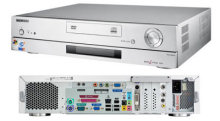 I have always wanted to build something that I like to call a “Universal Game System” (UGS). You could also call it the “ultimate game system,” since it would play all games for every game system ever released. Well, theoretically it could — with a powerful enough processor and the right emulators. That’s why I call it “universal.” But for now I’ll set my sights lower and stop at the N64 generation. The UGS itself would have a simple interface to launch every game, would have ports for every type of controller for each system (or at least a select few that could be used on most games), it would hook up to a TV, and it would require nothing more than a game controller to select the games and operate the interface. You, the user, would provide the ROMs and controllers, and the UGS would do the rest. I suppose this would be kinda like a making a “MAME cabinet” for console games.
I have always wanted to build something that I like to call a “Universal Game System” (UGS). You could also call it the “ultimate game system,” since it would play all games for every game system ever released. Well, theoretically it could — with a powerful enough processor and the right emulators. That’s why I call it “universal.” But for now I’ll set my sights lower and stop at the N64 generation. The UGS itself would have a simple interface to launch every game, would have ports for every type of controller for each system (or at least a select few that could be used on most games), it would hook up to a TV, and it would require nothing more than a game controller to select the games and operate the interface. You, the user, would provide the ROMs and controllers, and the UGS would do the rest. I suppose this would be kinda like a making a “MAME cabinet” for console games.
Central to the UGS would be a powerful computer fitted with emulators for every system, all seamlessly integrated into one easy-to-use front end interface. You would never have to use a keyboard or mouse (although you could if you so desired), as you could easily select, launch, and play games with only a game controller. Also, you could see everything you’re doing on an ordinary old TV (not HDTV, although it would definitely support that too) with larger fonts and a layout designed for analog TV legibility. While HDTVs should be cheap and plentiful in the future, playing games on an old analog TV might be a big part of the “authentic nostalgia factor” soon, as regular TVs are quickly being supplanted by the new technology. And besides, I personally neither have nor can afford an HDTV-capable TV right now.
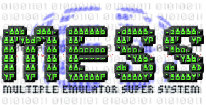 It is my goal to one day build one of these, but the requisite software is not quite together yet. I’m not aware of all the latest and greatest in the emulator scene, but maybe something that would help me build a UGS is in the works. I know about MESS (Multiple Emulator Super System), but last time I used it, it wasn’t in the best of shape (it still needs lots of work, in my opinion). Still, when it’s fully mature, MESS combined with the right front-end interface might just do the trick on the software end.
It is my goal to one day build one of these, but the requisite software is not quite together yet. I’m not aware of all the latest and greatest in the emulator scene, but maybe something that would help me build a UGS is in the works. I know about MESS (Multiple Emulator Super System), but last time I used it, it wasn’t in the best of shape (it still needs lots of work, in my opinion). Still, when it’s fully mature, MESS combined with the right front-end interface might just do the trick on the software end.
 But the software is only half the battle. I also need a small, compact, quiet, and cool PC case that can hold the right cards for the I/O required, while also being able to hold a powerful enough processor to do the job (processor-generated heat is the main factor in dictating noise level and case size). Inside said box would be a versatile computer video card with an excellent composite or S-Video analog TV-out that looks good on regular old TVs. I’ve tried a few cards so far, but the video is always lackluster, and you have to reference a VGA monitor on the side to actually read what you’re doing (to select the games to play, etc.). As far as interfaces go, I plan on building a large controller interface box that has ten or more types of classic system controller ports that would all hook up to a USB connection, similar to RetroZone’s controllers, or Lik Sang’s Smart Joy series. You could plug in your NES, SNES, N64, Genesis, PlayStation, etc. controllers and play the original system’s games with them on a regular TV as if you had the real console in front of you.
But the software is only half the battle. I also need a small, compact, quiet, and cool PC case that can hold the right cards for the I/O required, while also being able to hold a powerful enough processor to do the job (processor-generated heat is the main factor in dictating noise level and case size). Inside said box would be a versatile computer video card with an excellent composite or S-Video analog TV-out that looks good on regular old TVs. I’ve tried a few cards so far, but the video is always lackluster, and you have to reference a VGA monitor on the side to actually read what you’re doing (to select the games to play, etc.). As far as interfaces go, I plan on building a large controller interface box that has ten or more types of classic system controller ports that would all hook up to a USB connection, similar to RetroZone’s controllers, or Lik Sang’s Smart Joy series. You could plug in your NES, SNES, N64, Genesis, PlayStation, etc. controllers and play the original system’s games with them on a regular TV as if you had the real console in front of you.
My question for you guys out there is this: do you know of any software or hardware that would help me fulfill my dream of building this ultimate emulator system? Hardware? Front ends? Emulators? Any suggestions about how the UGS should function? Let’s work together to figure this thing out. Eventually, a commercial version of a device like this will probably be as common in a household as a DVD player is now (minus the ten different controller ports, of course). Until then, we have to work hard to make it happen on our own terms.
Update (03/31/2006): I like how I made the UGS sound like some kind of incredibly complex, dramatic project, requiring resources and effort akin to the Space Race to achieve properly. And then you guys come along and nonchalantly say “Yep, I’ve got one already.” 🙂 Well, I don’t “got one” yet, of course, but I will some day, thanks to your help (it was your feedback that I wanted about front ends, etc.). Still, to me, the ideal, seamlessly fuctioning UGS has not yet been created. Who knows if it ever will…
Ok, I’m being dramatic again.
